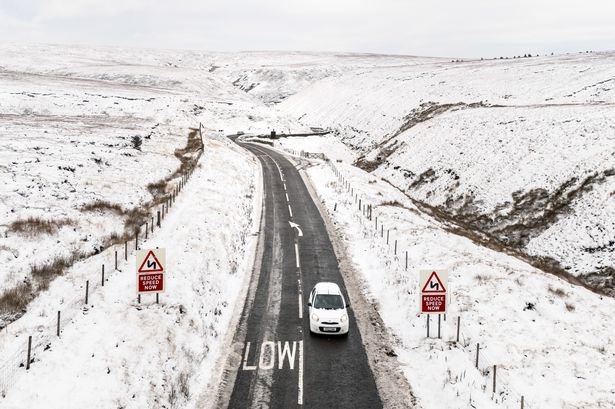The United Kingdom is bracing for widespread disruption as a significant arctic blast engulfs the nation, bringing with it a blanket of snow and ice. The Met Office, the UK’s national weather service, has issued severe weather warnings covering nearly the entire country, urging residents to prepare for potentially hazardous conditions and travel chaos. This widespread cold snap carries the potential for significant impacts, including dangerous driving conditions, power outages, school closures, and disruptions to public transportation. The severity of the warnings underscores the need for individuals, businesses, and local authorities to take proactive measures to mitigate the potential risks.
The impending weather system is expected to deliver a combination of heavy snowfall, freezing rain, and strong winds, creating a perfect storm for treacherous travel conditions. Roads may become impassable due to snow accumulation and ice formation, potentially leading to accidents and stranding motorists. Visibility will likely be significantly reduced, further exacerbating the dangers. Authorities are advising against all but essential travel, urging people to stay home and avoid putting themselves and others at risk. Those who absolutely must travel should ensure their vehicles are adequately equipped for winter conditions, carrying emergency supplies such as blankets, food, water, and a charged mobile phone.
Beyond travel disruptions, the widespread snow and ice pose risks to infrastructure and essential services. The weight of accumulated snow can damage power lines, leading to widespread outages that can disrupt heating, lighting, and communication systems. This is particularly concerning given the frigid temperatures expected to accompany the snow. Similarly, heavy snowfall can strain water pipes, increasing the risk of bursts and subsequent water shortages. Local authorities are working to prepare for these potential challenges, ensuring that emergency services are ready to respond and that vulnerable populations have access to necessary support.
The impact on daily life is also anticipated to be significant. Schools may be forced to close due to unsafe travel conditions and the potential for power outages. Businesses may experience disruptions, with employees unable to commute to work. Healthcare facilities may face challenges in providing services, with both staff and patients potentially facing difficulties reaching hospitals and clinics. The cumulative effect of these disruptions can put a strain on communities and require coordinated efforts to ensure the safety and well-being of all residents.
Preparing for such widespread weather events requires a multi-pronged approach. Individuals should stock up on essential supplies, including food, water, medications, and batteries. They should also ensure their homes are adequately insulated and that heating systems are functioning properly. Checking on vulnerable neighbors and relatives is crucial, especially for those who may live alone or have limited mobility. Businesses should develop contingency plans to address potential disruptions to operations, including remote work options and communication strategies for employees and customers.
On a broader scale, local authorities play a vital role in coordinating emergency response efforts. This includes ensuring that roads are gritted and cleared as quickly as possible, that emergency shelters are available for those in need, and that communication channels are open to keep residents informed about the evolving situation. Public awareness campaigns are essential to disseminating safety information and encouraging residents to take appropriate precautions. By working together and taking proactive steps, communities can mitigate the impact of this severe weather event and ensure the safety and well-being of all. The coming days will be a test of resilience and preparedness, underscoring the importance of heeding weather warnings and taking the necessary steps to stay safe.














